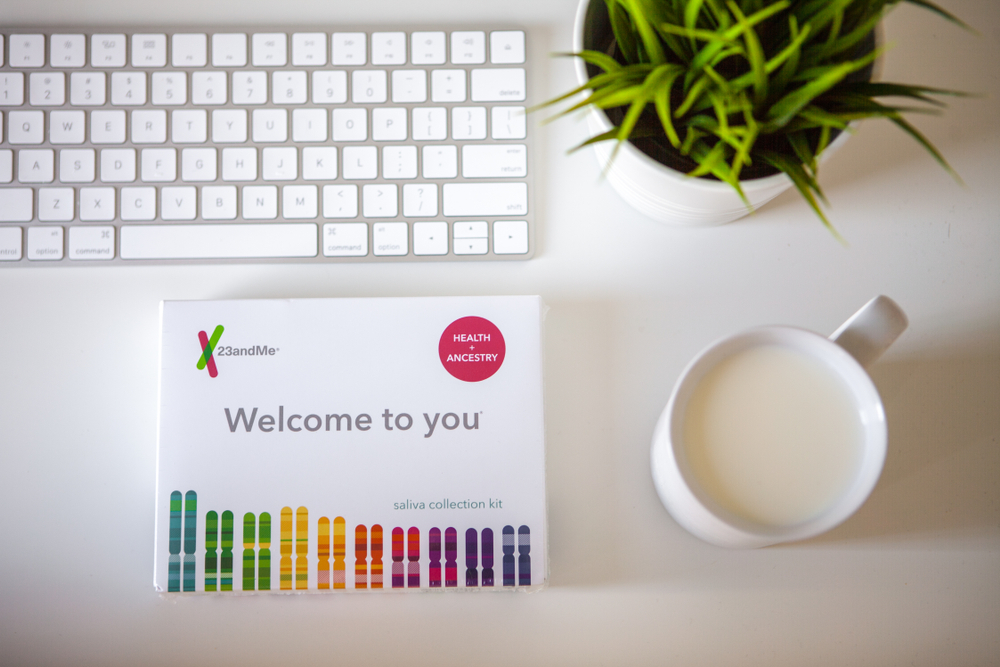Remember when everyone was discovering they were 12% Scandinavian and posting colorful pie charts of their genetic heritage on social media? Those glory days of DNA testing have come to a stunning end with Monday’s announcement that pharmaceutical giant Regeneron will acquire 23andMe for just $256 million in a bankruptcy auction—a fraction of the company’s former $6 billion valuation.
The deal marks a dramatic conclusion to what was once heralded as a revolutionary consumer health company. From Oprah’s “favorite things” list to partnerships with major research institutions, 23andMe seemed destined for greatness. So what exactly happened? How did a company that had us all willingly sending our most personal biological information through the mail end up selling itself for pennies on the dollar?
When the ancestry testing boom went bust
The first major crack in 23andMe’s foundation came from an unexpected source: market saturation. The company’s initial growth was explosive, as curious consumers eagerly purchased DNA kits to discover their ancestral backgrounds and potential health predispositions. But it turns out there’s a natural ceiling to this market—once you’ve tested your DNA, you generally don’t need to do it again.
By 2019, industry reports showed significant slowdowns in new customer acquisition across all DNA testing companies. Simply put, most people interested in genetic testing had already purchased a kit. 23andMe found itself facing the classic growth company nightmare: a plateauing customer base and shareholders expecting continued expansion.
The pandemic further dampened interest in ancestry testing. When people were worried about immediate health concerns and economic uncertainty, discovering distant cousins suddenly seemed less appealing. Holiday gift sales—a major driver of DNA testing kits—plummeted as family gatherings were canceled and discretionary spending tightened.
Without a steady stream of new customers, 23andMe’s direct-to-consumer business model faced serious challenges. The company attempted to pivot toward subscription services and additional health reports, but these efforts failed to generate the revenue needed to replace the declining sales of testing kits.
When your business model needs a DNA transplant
As their consumer business struggled, 23andMe increasingly looked toward their other major asset: the massive genetic database they had accumulated from millions of customers. The company had always maintained dual revenue streams—selling testing kits to consumers while simultaneously leveraging anonymized genetic data for medical research and pharmaceutical partnerships.
This pivot became more pronounced in 2018 when 23andMe announced a $300 million deal with pharmaceutical company GlaxoSmithKline, giving the drug giant access to the company’s genetic database for drug development purposes. While this deal provided a much-needed cash infusion, it also signaled a fundamental shift in 23andMe’s business focus.
The company began pouring resources into its own drug development division, hoping to transform from a consumer testing company into a pharmaceutical developer that could create medications based on insights from its genetic database. This transformation required significant capital investment with uncertain returns, stretching the company’s finances during an already challenging period.
Meanwhile, competitors like Ancestry.com began eating into 23andMe’s consumer market share with aggressive marketing and expanded offerings. The once-innovative company found itself caught between two business models—neither of which was generating sufficient revenue to sustain its operations and justify its lofty valuation.
When your most valuable asset becomes your biggest liability
Perhaps the most damaging blow to 23andMe came in October 2023, when the company disclosed a devastating data breach. Hackers accessed the personal information of approximately 6.9 million customers—nearly half of the company’s user base. While the company insisted that genetic information wasn’t compromised, the breach included access to personal details and ancestry information for millions of affected users.
The timing couldn’t have been worse. With consumer trust already fragile regarding genetic privacy, the data breach created a public relations nightmare and accelerated the company’s already declining sales. New customers became increasingly reluctant to share their genetic information with a company that had demonstrated security vulnerabilities.
The breach also exposed 23andMe to significant legal liability. Multiple class-action lawsuits were quickly filed, claiming negligence in protecting sensitive customer information. These legal challenges added further financial pressure to a company already struggling with declining revenue and increased operational costs.
Beyond the immediate financial impact, the data breach severely damaged 23andMe’s brand reputation. A company built on the premise that customers could trust it with their most intimate biological information now faced fundamental questions about its security practices and commitment to privacy.
When the money finally runs out
By early 2024, these combined pressures had created an untenable financial situation. Despite multiple rounds of layoffs and cost-cutting measures, 23andMe found itself unable to meet its financial obligations. In March, the company filed for bankruptcy protection, setting up the auction process that would ultimately lead to Regeneron’s acquisition.
The bankruptcy filing revealed just how dire the company’s situation had become. Once flush with investor cash and valued at billions, 23andMe now struggled with mounting debts, legal liabilities, and insufficient revenue to cover its operational costs. The company that had pioneered an industry was now fighting for survival.
The bankruptcy proceedings immediately triggered concerns about the fate of the company’s most valuable asset: the genetic data of approximately 15 million customers who had trusted 23andMe with their DNA samples. Lawmakers and privacy advocates warned that this sensitive information could potentially be sold to unscrupulous buyers without adequate protection for consumers.
In response to these concerns, 23andMe agreed last month to allow a court-appointed overseer to monitor the company’s handling of customer genetic information and security policies throughout the bankruptcy process. This unusual step acknowledged the unique sensitivity of the assets involved in this particular corporate failure.
When a pharmaceutical giant sees opportunity in your demise
Enter Regeneron Pharmaceuticals, a company with a very different perspective on 23andMe’s value. Where investors saw a failing consumer business, Regeneron recognized an unprecedented opportunity to acquire a massive genetic database with enormous potential for drug discovery and development.
Regeneron’s interest in 23andMe wasn’t surprising to industry observers. The two companies had already established a partnership in 2020 to collaborate on drug development using genetic insights from 23andMe’s database. This existing relationship gave Regeneron insider knowledge about the potential value of 23andMe’s genetic information for pharmaceutical research.
For Regeneron, the $256 million purchase price represents a bargain for access to 15 million genetic profiles—data that would be extraordinarily expensive and time-consuming to collect through traditional research methods. When broken down per customer, Regeneron is paying roughly $17 for each genetic profile, a minuscule amount considering the potential value for drug development.
The acquisition aligns perfectly with Regeneron’s business model, which focuses on developing medications for conditions ranging from eye diseases to cancer to heart conditions. Access to 23andMe’s diverse genetic database provides them with an unprecedented resource for identifying potential drug targets and understanding genetic factors in disease development.
When your DNA becomes someone else’s asset
The terms of the deal reveal much about Regeneron’s priorities. The pharmaceutical company will acquire all units of 23andMe except its telehealth service Lemonaid Health, which the genetic testing firm plans to wind down. This selective acquisition suggests Regeneron values the genetic data and testing infrastructure far more than 23andMe’s consumer health services.
After the transaction completes, expected in the third quarter of this year, 23andMe will continue to operate as a wholly owned unit of Regeneron. This structure allows Regeneron to maintain the consumer-facing brand while gaining direct access to the valuable genetic information it contains.
Recognizing the sensitivity of the data involved, Regeneron has publicly committed to complying with 23andMe’s existing privacy policies and applicable laws regarding customer data use. The company has also stated its willingness to detail its intended uses of the data to the court-appointed overseer monitoring the bankruptcy proceedings.
These assurances attempt to address the significant privacy concerns raised throughout the bankruptcy process. However, they also highlight the fundamental reality of the situation: genetic data provided by consumers for personal insights will now be owned by a pharmaceutical company with very different objectives than the original recipient of that information.
When one company’s failure changes an entire industry
The fall of 23andMe and its acquisition by Regeneron represents more than just one company’s business failure—it potentially signals a fundamental shift in the direct-to-consumer genetic testing industry. The spectacular rise and fall of the industry pioneer raises questions about the viability of similar business models and the ultimate fate of genetic information collected by these companies.
For consumers, the 23andMe saga offers a cautionary tale about the long-term implications of sharing genetic information with private companies. The bankruptcy demonstrates how quickly a company’s circumstances can change, potentially putting highly sensitive personal information at risk despite initial promises of privacy and control.
For the broader genetic testing industry, 23andMe’s bankruptcy suggests that the direct-to-consumer model alone may not provide sustainable growth once initial market curiosity is satisfied. Future companies in this space will likely need to establish clearer secondary revenue streams from the outset, potentially making the pharmaceutical applications of genetic data more central to their business models rather than an add-on feature.
The acquisition also highlights the increasing overlap between consumer health technology and traditional pharmaceutical companies. As more consumer companies collect valuable health data, they become attractive acquisition targets for established healthcare players looking to gain competitive advantages in drug development and personalized medicine.
Ultimately, the 23andMe story reveals the complex challenges of building businesses around highly personal customer data. When your business asset is also someone else’s most intimate biological information, the standard rules of corporate acquisitions, bankruptcies, and pivots take on entirely new dimensions of ethical and privacy considerations.
The $256 million sale price may resolve 23andMe’s immediate financial problems, but the broader questions about genetic privacy, consumer rights, and the commodification of biological information will continue long after this particular corporate transaction is complete.

















